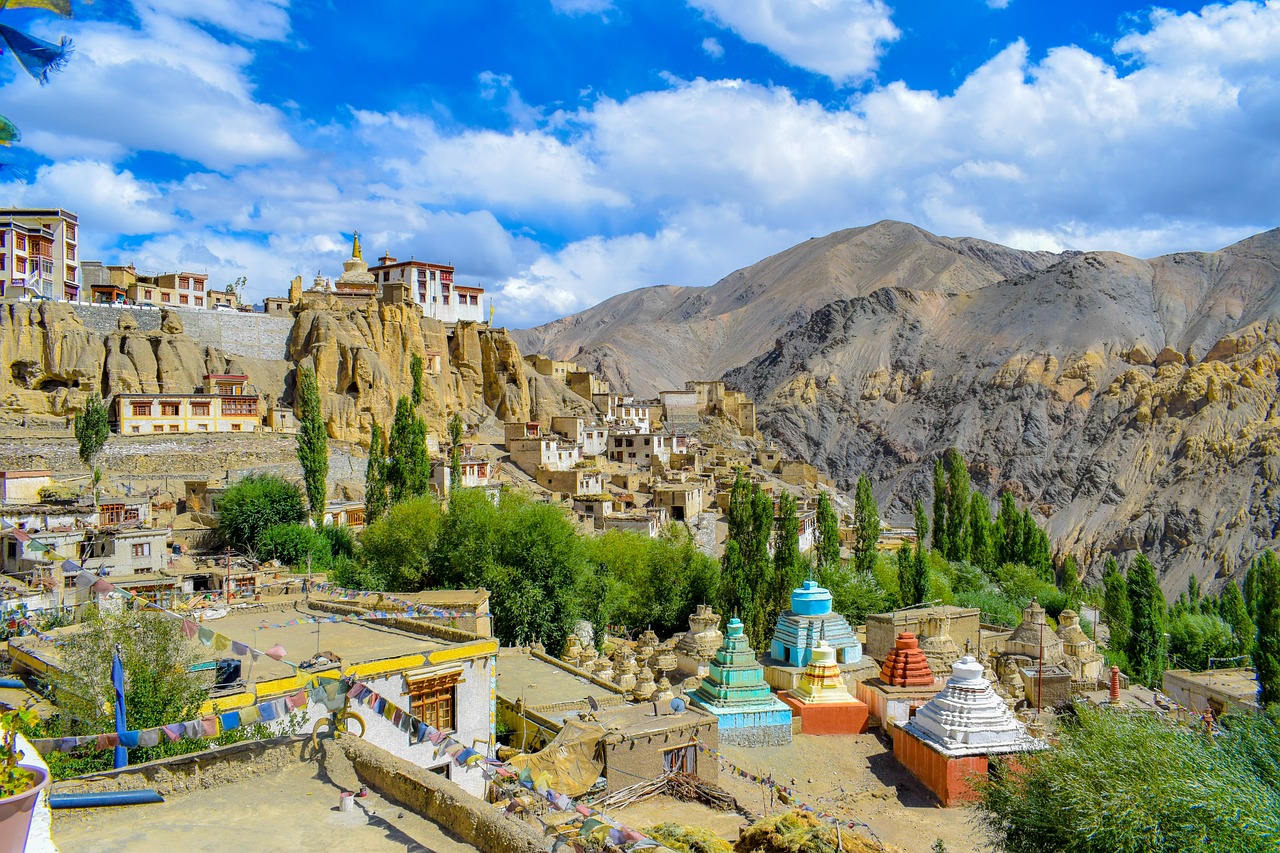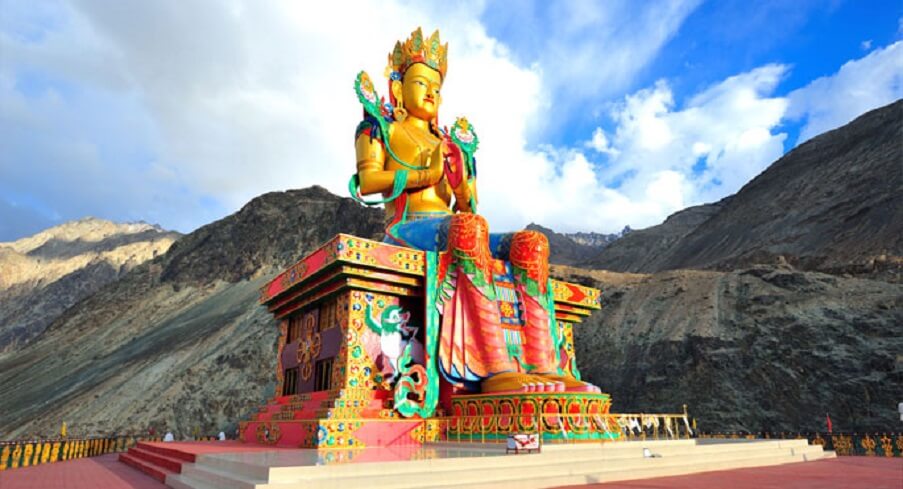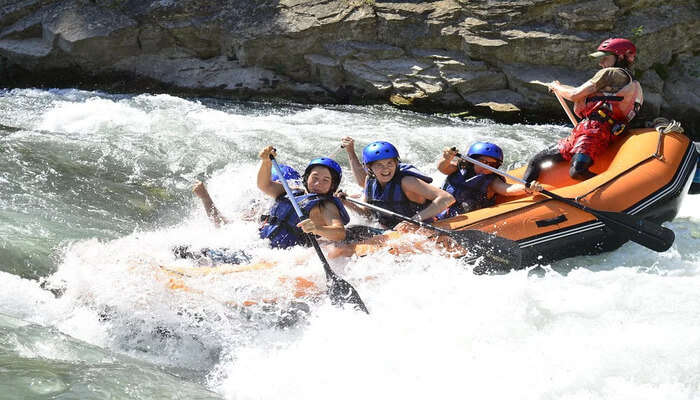What Attracts Tourists to Ladakh: Unveiling the Charms of the Land of High Passes

Photo by AvengerDove on Pixabay
Ladakh, known as the “Land of High Passes,” is a captivating region that attracts tourists from all around the world. Nestled in the northernmost part of India, Ladakh offers a unique blend of breathtaking landscapes, rich cultural heritage, and adventurous activities. In this article, we will explore the various factors that make Ladakh a must-visit destination for travelers seeking an unforgettable experience.
1. Enchanting Landscapes: A Photographer’s Paradise
One of the primary reasons tourists are drawn to Ladakh is its awe-inspiring landscapes. The region is blessed with towering mountains, pristine lakes, and dramatic valleys that leave visitors spellbound. The stark beauty of Ladakh, with its rugged terrains and snow-capped peaks, creates a picturesque backdrop for nature enthusiasts and photographers alike.
The Majestic Himalayas: A Panorama of Grandeur
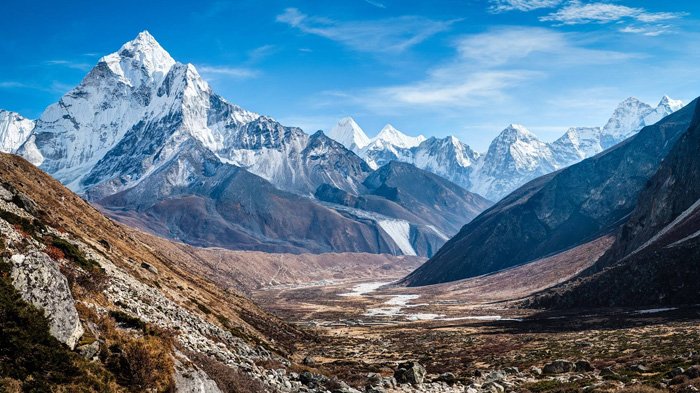
Ladakh is located in the lap of the mighty Himalayas, offering a panoramic view of some of the highest peaks in the world. The snow-capped mountains, such as Stok Kangri and Nun-Kun, provide a breathtaking sight for mountaineers and trekkers. Adventure seekers flock to Ladakh to conquer these peaks and experience the thrill of being surrounded by the majestic Himalayan ranges.
Tranquil Lakes: Serenity Amidst the Mountains
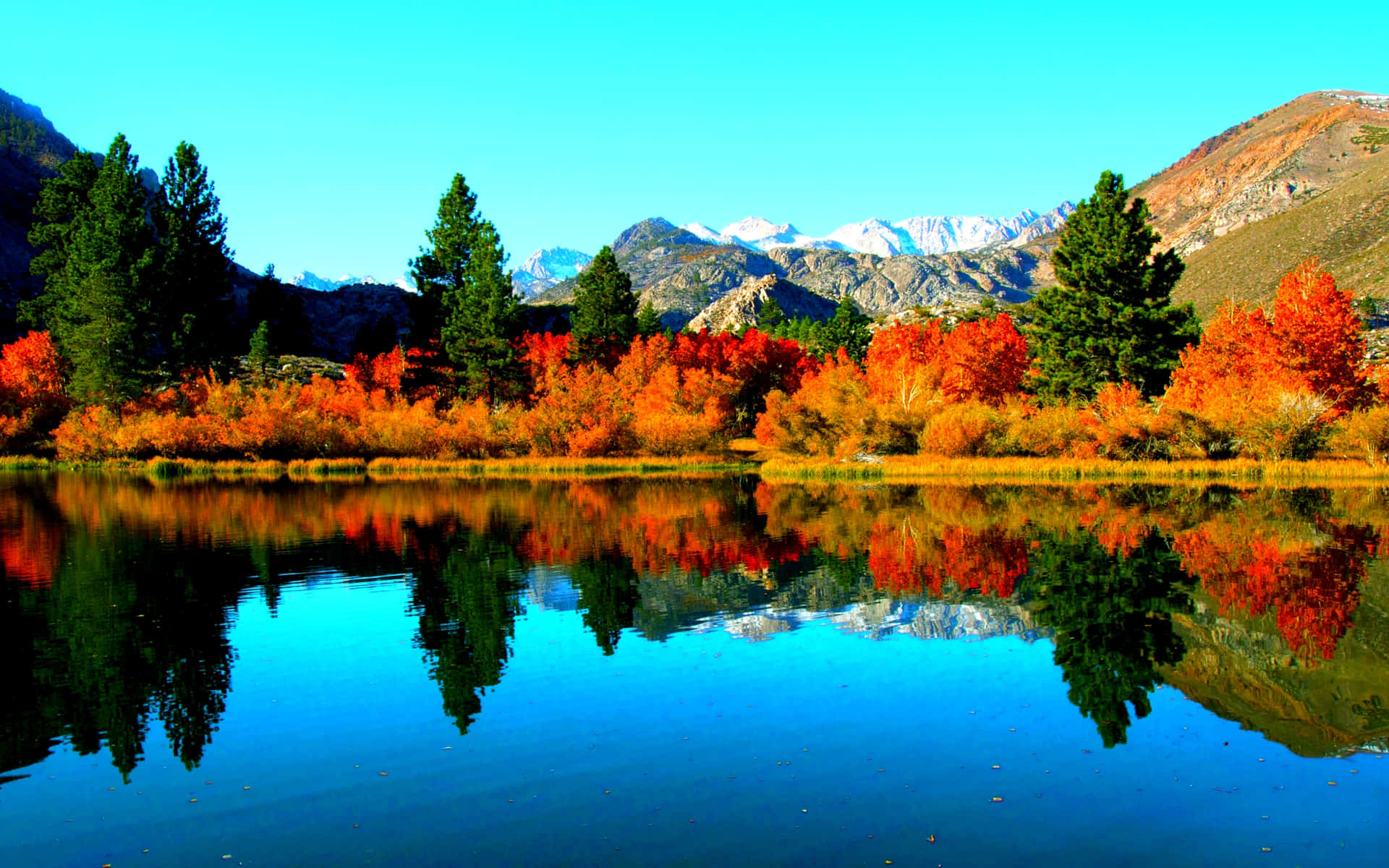
Ladakh is home to several enchanting lakes that add to its allure. Pangong Tso, Tso Moriri, and Tso Kar are some of the famous lakes that attract tourists with their crystal-clear blue waters reflecting the surrounding mountains. These serene lakes offer a tranquil escape from the bustling city life and provide an opportunity to connect with nature in its purest form.
Nubra Valley: The Valley of Flowers

Nestled amidst the towering mountains, Nubra Valley is a hidden gem in Ladakh. Known for its vibrant colors and lush greenery, the valley blooms with a plethora of flowers during the summer months. Tourists are captivated by the sight of the vibrant pink and yellow wildflowers carpeting the valley, creating a mesmerizing landscape that feels like a scene from a fairytale.
2. Cultural Heritage: Exploring Buddhist Monasteries and Gompas
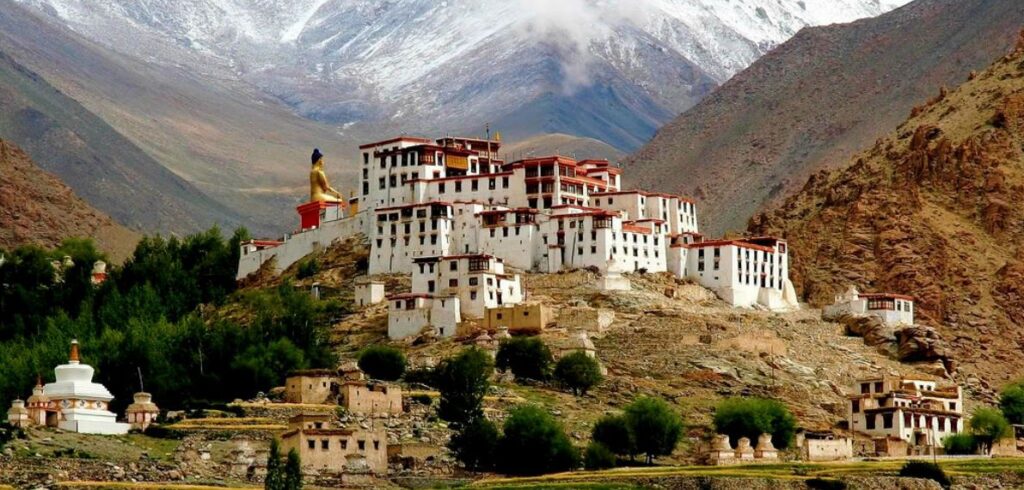
Ladakh is renowned for its rich cultural heritage, deeply rooted in Tibetan Buddhism. The region is dotted with numerous monasteries and gompas (Buddhist temples) that reflect the spiritual essence of Ladakhi culture. These ancient structures, adorned with intricate murals, statues, and prayer wheels, offer a glimpse into the spiritual traditions of the region.
Hemis Monastery: The Largest and Oldest Monastery in Ladakh
Hemis Monastery, located in the Hemis village, is one of the most significant monasteries in Ladakh. It is not only the largest monastery in the region but also one of the oldest. Housing a precious collection of thangkas (Buddhist paintings) and ancient artifacts, Hemis Monastery attracts both religious pilgrims and curious tourists seeking a deeper understanding of Tibetan Buddhism.
Thiksey Monastery: A Majestic Monastery on a Hilltop
Perched on top of a hill, Thiksey Monastery stands as a magnificent testament to Ladakhi architecture. Its stunning resemblance to the famous Potala Palace in Lhasa, Tibet, has earned it the nickname “Little Tibet.” The monastery houses a 49-foot tall statue of Maitreya Buddha, which is a sight to behold. Visitors can also witness the daily rituals and prayers performed by the resident monks, immersing themselves in the spiritual ambiance of the place.
Alchi Monastery: A Treasure Trove of Ancient Art
Alchi Monastery is a hidden gem that showcases the vibrant artistry of Ladakh. Dating back to the 11th century, it is known for its exquisite frescoes and intricate wood carvings. The monastery’s unique blend of Kashmiri and Tibetan architectural styles sets it apart from other monastic complexes in the region. A visit to Alchi Monastery offers a glimpse into the rich artistic heritage of Ladakh.
3. Adventurous Activities: From Trekking to River Rafting
Ladakh is a paradise for adventure enthusiasts, offering a wide range of thrilling activities that cater to all levels of experience. From trekking through remote mountain trails to engaging in adrenaline-pumping river rafting, there is something for everyone seeking an adventurous escapade.
Trekking: Traversing the High Passes and Hidden Valleys
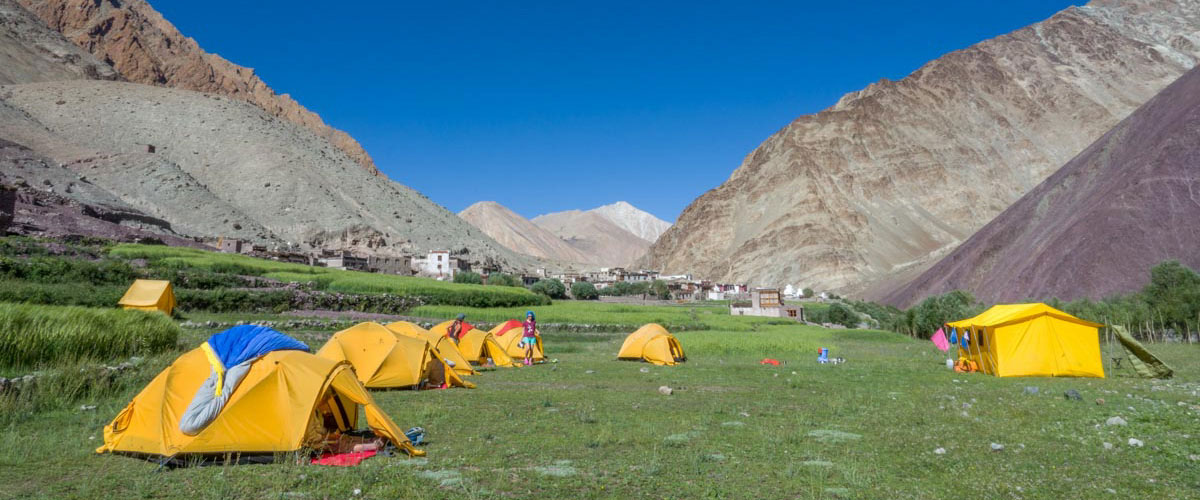
Ladakh offers some of the most breathtaking trekking routes in the world. The Markha Valley Trek, popular among trekkers, takes you through picturesque landscapes, quaint villages, and high mountain passes. The Chadar Trek, known as the “Frozen River Trek,” offers a unique experience of walking on the frozen Zanskar River during the winter months. These treks not only provide an adrenaline rush but also allow visitors to immerse themselves in the natural beauty of Ladakh.
River Rafting: Conquering the Rapids of Zanskar and Indus
For those seeking an adrenaline-fueled adventure, river rafting in Ladakh is an exhilarating experience. The Zanskar and Indus rivers offer thrilling rapids that challenge even the most experienced rafters. As you navigate through the gushing waters, you can witness the breathtaking landscapes and towering cliffs that line the riverbanks, adding to the thrill of the adventure.
Mountain Biking: Exploring Ladakh on Two Wheels

Ladakh’s rugged terrains and scenic landscapes make it a paradise for mountain biking enthusiasts. The region offers a variety of biking trails, ranging from easy routes for beginners to challenging paths for experienced riders. Cycling through the picturesque valleys and high mountain passes, bikers can soak in the beauty of Ladakh at their own pace, creating unforgettable memories along the way.
4. Festivals and Cultural Celebrations: Immerse Yourself in Ladakhi Traditions
Ladakh is known for its vibrant festivals and cultural celebrations, which provide a unique opportunity for tourists to experience the local traditions and customs. These festivities are marked by colorful processions, traditional dances, music performances, and elaborate costumes, creating a festive atmosphere that captivates visitors.
Hemis Festival: Celebrating the Birth of Guru Padmasambhava
Hemis Festival, celebrated in the Hemis Monastery, is one of the most popular festivals in Ladakh. It commemorates the birth anniversary of Guru Padmasambhava, the founder of Tibetan Buddhism. The monastery comes alive with vibrant mask dances, music, and religious rituals performed by the monks, attracting a large number of tourists and devotees from around the world.
Losar Festival: Welcoming the Tibetan New Year
Losar Festival, also known as the Ladakhi New Year, is a joyous celebration that marks the beginning of the Tibetan calendar. The festival is characterized by traditional dance performances, music, and the famous “Chams” dance, where masked dancers portray various deities and mythical creatures. Participating in the Losar Festival allows visitors to immerse themselves in the vibrant Ladakhi culture and witness the locals’ enthusiasm for their traditions.
Ladakh Festival: Showcasing the Cultural Diversity of Ladakh
The Ladakh Festival, held annually in Leh, showcases the cultural heritage and diversity of the region. The festival features traditional music and dance performances, archery competitions, polo matches, and a grand procession of beautifully adorned locals in traditional attire. It offers a glimpse into the vibrant traditions and customs of Ladakh, allowing visitors to appreciate the rich cultural tapestry of the region.
5. Wildlife Encounters: Discovering the Flora and Fauna of Ladakh
Ladakh is not only a haven for adventure seekers and culture enthusiasts but also a paradise for wildlife enthusiasts. The region is home to a diverse range of flora and fauna, some of which are endemic to the area. Exploring Ladakh’s wildlife sanctuaries and reserves offers a chance to witness the region’s unique biodiversity.
Hemis National Park: A Sanctuary for Snow Leopards
Hemis National Park, nestled in the eastern part of Ladakh, is famous for being the habitat of the elusive snow leopard. The park is home to several other endangered species, including the Tibetan wolf, Eurasian brown bear, and Himalayan blue sheep. Wildlife enthusiasts and nature lovers visit the park in the hope of catching a glimpse of these magnificent creatures in their natural habitat.
Changthang Wildlife Sanctuary: A Haven for Migratory Birds
Changthang Wildlife Sanctuary, located in eastern Ladakh, is a paradise for birdwatchers. The sanctuary is a crucial breeding ground for migratory birds, including the black-necked crane, bar-headed goose, and Brahminy duck. Visitors can witness these exquisite avian species in their natural surroundings, adding to the allure of Ladakh as a wildlife destination.
Flora of Ladakh: Surviving in Extreme Conditions
Ladakh’s harsh climate and high altitude create a unique ecosystem that supports a diverse range of flora. The region is known for its hardy wildflowers, such as the edelweiss and blue poppy, which bloom in vibrant colors during the summer months. The barren landscapes of Ladakh come alive with these beautiful flowers, adding a touch of beauty to the rugged terrain.
6. Cultural Immersion: Homestays and Local Experiences
To truly experience the essence of Ladakh, many tourists opt for homestays and local experiences. Staying with local families allows visitors to immerse themselves in the Ladakhi way of life, learn about their customs and traditions, and forge meaningful connections with the local community.
Homestays: Embracing Ladakhi Hospitality
Homestays in Ladakh offer a unique opportunity to experience the warm hospitality of the locals. Visitors can reside in traditional Ladakhi homes, where they are welcomed as part of the family. Sharing meals with the hosts, participating in cultural activities, and exchanging stories create a sense of belonging and provide a deeper understanding of Ladakhi culture.
Traditional Cuisine: Indulging in Ladakhi Delicacies
Ladakhi cuisine is a reflection of the region’s cultural diversity and geographic isolation. Traditional dishes like thukpa (noodle soup), momos (dumplings), and skyu (a hearty stew) tantalize the taste buds with their unique flavors. Food enthusiasts can savor these authentic Ladakhi delicacies and gain insights into the traditional culinary practices of the region.
Art and Handicrafts: Preserving Ladakhi Traditions
Ladakh is renowned for its intricate handicrafts and vibrant art forms, which are passed down through generations. Visitors can explore local markets and workshops to witness artisans creating exquisite handwoven textiles, intricate wood carvings, and intricate metalwork. Purchasing these traditional crafts not only supports the local economy but also helps preserve Ladakh’s rich cultural heritage.
7. Spiritual Retreats: Finding Inner Peace in Ladakh
Ladakh’s serene and tranquil environment has attracted spiritual seekers for centuries. The region offers numerous spiritual retreats and meditation centers where visitors can embark on a journey of self-discovery and find inner peace amidst the majestic landscapes.
Diskit Monastery: A Spiritual Haven in Nubra Valley
Diskit Monastery, located in the Nubra Valley, is a peaceful retreat where visitors can immerse themselves in the teachings of Buddhism. The monastery provides a serene setting for meditation and contemplation, with panoramic views of the surrounding mountains. The tranquil ambiance and the guidance of the resident monks create an ideal environment for spiritual introspection.
Yoga and Meditation: Embracing Mindfulness in Ladakh
Ladakh’s serene environment and tranquil surroundings make it an ideal destination for yoga and meditation retreats. Numerous centers offer yoga and meditation classes, allowing visitors to rejuvenate their minds, bodies, and souls. Practicing yoga amidst the breathtaking landscapes of Ladakh adds a unique dimension to the spiritual experience.
8. Responsible Tourism: Preserving Ladakh’s Fragile Ecosystem
As tourism in Ladakh continues to grow, there is a growing emphasis on responsible tourism practices to ensure the preservation of the region’s fragile ecosystem and cultural heritage. Several organizations and initiatives promote sustainable tourism, encouraging visitors to minimize their environmental impact and support local communities.
Eco-Tourism: Exploring Ladakh’s Natural Wonders Responsibly
Eco-tourism initiatives in Ladakh aim to promote sustainable practices that protect the region’s natural resources. Tourists are encouraged to engage in activities that have minimal impact on the environment, such as trekking on designated trails, using eco-friendly transportation, and respecting the local flora and fauna.
Community-Based Tourism: Empowering Local Communities
Community-based tourism initiatives empower local communities by involving them in the tourism industry and ensuring they benefit directly from visitors’ presence. Tourists can engage in activities such as homestays, cultural exchanges, and purchasing locally made handicrafts, contributing to the economic growth and well-being of the local community.
Responsible Trekking: Leaving No Trace Behind
Trekking in Ladakh’s pristine landscapes comes with the responsibility of leaving no trace behind. Tourists are encouraged to follow the principles of responsible trekking, such as carrying their waste, respecting wildlife habitats, and adhering to camping guidelines. By practicing responsible trekking, tourists can help preserve the natural beauty of Ladakh for future generations.
9. Best Time to Visit Ladakh: Seasonal Delights
Ladakh’s climate and accessibility vary throughout the year, making it crucial to choose the right time to visit based on personal preferences and the desired experiences. Each season in Ladakh offers unique attractions and activities for tourists to enjoy.
Summer (June to September): Exploring the Trans-Himalayan Region
Summer is the peak tourist season in Ladakh when the region becomes accessible due to the opening of mountain passes and roads. The weather is pleasant, with temperatures ranging from 15°C to 30°C, making it ideal for outdoor activities like trekking, mountaineering, and wildlife spotting. The colorful landscapes and vibrant festivals during this time make Ladakh a vibrant and lively destination.
Winter (October to February): Embracing the Frozen Wonderland
Winter in Ladakh is a magical time when the region transforms into a snowy wonderland. The temperatures drop significantly, often reaching below freezing point. Winter sports enthusiasts can indulge in activities like ice-skating, skiing, and snowboarding. The frozen lakes, such as Pangong Tso and Tso Moriri, become a sight to behold as they transform into vast stretches of ice.
Shoulder Seasons (March to May and September to October): Mild Weather and Cultural Festivals
The shoulder seasons offer a mix of pleasant weather and cultural festivities. In spring (March to May), the weather gradually warms up, and the landscapes come alive with blooming flowers. This time is ideal for witnessing the famous Hemis Festival and exploring the cultural heritage of Ladakh. In autumn (September to October), the weather starts to cool down, and visitors can witness the vibrant colors of the changing foliage, adding a touch of enchantment to the landscapes.
10. How to Reach Ladakh: Gateway to the Land of High Passes
Reaching Ladakh can be an adventure in itself, as the region is nestled amidst the rugged terrains of the Himalayas. However, there are multiple ways to access this enchanting destination, whether by air, road, or rail.
By Air: Leh Airport, the Gateway to Ladakh
The easiest way to reach Ladakh is by air, with Kushok Bakula Rimpochee Airport in Leh being the main gateway. Several domestic airlines operate regular flights from major Indian cities like Delhi, Mumbai, and Kolkata to Leh. The flight offers stunning views of the Himalayan ranges, providing a thrilling start to the Ladakh experience.
By Road: The Scenic Journey to Ladakh
For those seeking an adventurous road trip, the Manali-Leh Highway and the Srinagar-Leh Highway offer unparalleled scenic beauty. These highways pass through picturesque landscapes, high mountain passes, and quaint villages. Travelers can choose to drive or hire a taxi to enjoy the breathtaking vistas along the way, making the journey to Ladakh an unforgettable experience.
By Rail: The Nearest Railhead to Ladakh
The nearest railhead to Ladakh is Jammu Tawi Railway Station, which is well-connected to major cities in India. From Jammu, tourists can opt for road transport via taxis or buses to reach Ladakh. Although the journey by rail is longer, it offers an opportunity to witness the changing landscapes of northern India.
Note: It is important to check the current travel restrictions and guidelines before planning a trip to Ladakh, as they may vary due to the prevailing circumstances.
Discover the Enchanting Charms of Ladakh
Ladakh, with its breathtaking landscapes, rich cultural heritage, and thrilling adventures, presents an irresistible allure to tourists from around the world. Whether you are seeking spiritual enlightenment, adrenaline-pumping activities, or a serene escape into nature, Ladakh promises to leave you captivated and yearning for more. Embark on a journey to the “Land of High Passes” and unravel the hidden treasures that await in this mystical destination.

